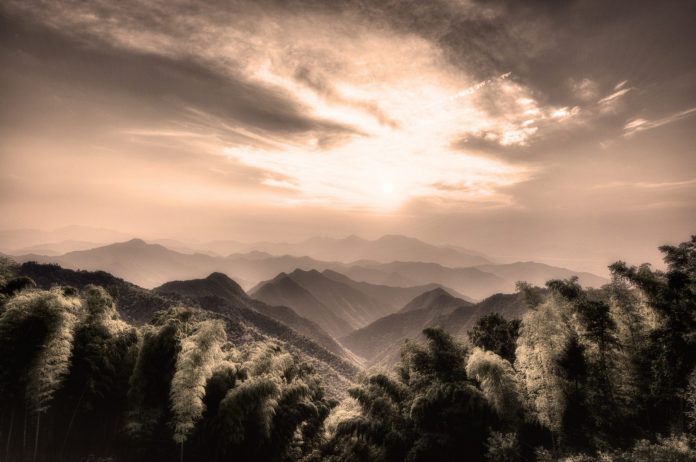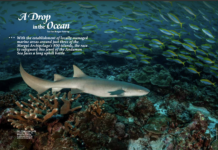
Storing greenhouse gases within the Earth
Text YD Bar-Ness
The same fossil fuels that power our technological achievements are now known to be altering our Earth’s atmosphere and climate. The organic chemicals – particularly CO – released from burning vegetation, natural gas, coal and oil are now collecting in the atmosphere. The negative consequences of this are now well known, including an overall increase in global temperatures,
ocean acidification, melting ice and rising seas.
But perhaps the technological skills that helped us to burn these materials can help us to right the atmospheric balance that we are fast tilting. What if we could avoid a climate catastrophe by putting the released greenhouse gases back into the Earth? Is this an irresponsible fantasy, a pathway to salvation, or something in between?

A Quick Review of the Carbon Cycle
Carbon is an element with six protons that is one of the major chemical building blocks of organic materials. When you read the news about “carbon” in the context of global pollution and atmosphere, you are almost always reading a shortened reference to “carbon dioxide”. Let’s quickly review what carbon dioxide actually is.
Two oxygen atoms connect to a single carbon atom to form carbon dioxide. Breathe out, and you are emitting this compound. Light a match, witness a forest burning, observe a volcano erupting, or use electricity, and in almost all cases, this odourless, invisible gas is released into the common airspace that we all share. Furthermore, there are other greenhouse gases, most notably methane, that are also involved in the alteration of the Earth’s climate.
How can carbon be removed from the atmosphere? Primarily, it is by the action of photosynthetic plants converting it into sugars, the building blocks of living organisms. Your body is made of chemicals built around carbon that was at some point removed from the shared atmosphere by a green plant. Over geological time, this biomass has accumulated in the oceans, on the land, in the atmosphere and underground as fossil fuels. The fossil fuels have been stored, or sequestered, within the Earth as solids (limestone, coal), liquids (oil), or gases (natural gas). In very recent times, humans have released some of this stored biomass by burning fossil fuels. In the process, carbon dioxide has been released into the atmosphere.
There are large flows of carbon between these pools. About 90 gigatons are annually exchanged, in both directions, between the liquid ocean and the atmosphere. Green plants pull about 60 gigatons per year out of the atmosphere and store it as biomass or soil – but this number is changing as Earth’s vegetation is altered.
The flow of carbon that is of most concern is the roughly nine gigatons of carbon that is being transferred from the fossil reservoir to the atmosphere. It is the level of atmospheric carbon that worries us the greatest, as rising levels mean more of the Sun’s heat is trapped – the so-called greenhouse effect.

The Basic Idea of Geosequestration
There are now active research projects being conducted to convert the components of the atmospheric carbon dioxide into liquids or solids that can be stored safely underground. An optimal solution would be chemical – to somehow create vast stores of solid rock, perhaps mimicking the limestone that is formed of the bodies of ancient seashells and coral. However, this is not actually feasible in the short term, as it requires long periods of time and an unmatchable biological process.
That leaves non-chemical, mechanical alternatives. This can theoretically be done after meeting several challenges. A suitable storage location needs to be found, an efficient process needs to be engineered and scaled up, and future leakages need to be prevented.
How to Trap Carbon
The current proposals to sequester carbon in a stable liquid or solid form are based around putting it back into underground locations. The three major subterranean targets are, in roughly descending order of feasibility:
• Oil and gas fields: These have the advantages of having been thoroughly mapped and fitted with pumps. This technology could be used at both exhausted and current oil projects.
• Salt-water aquifers: Carbon dioxide pumped into salt water would be injected into underground water bodies that are unsuitable for drinking. These aquifers are widely distributed on Earth.
• Coal seams: The strata of fossilised plant material can contain the fossil fuel methane (also known as natural gas). It can also be used as an underground storage space for CO2. The injection of the CO2 can simultaneously push out the methane during the mining process.

One major conceptual hurdle to successfully setting up a long-term carbon storage system is that these underground locations are at specific places, but many of our sources of greenhouse gases are distributed across the planet. This means that the geosequestration projects will be most efficient when matched with fixed power stations – capturing their output as they produce greenhouse gases. While this mitigation of energy production’s carbon pollution is an important step towards a sustainable carbon cycle, it is not a remedy for the amount of excess carbon we have already placed into the atmosphere.
Therefore, it will be another technological step to begin the process of removing carbon spread throughout the Earth’s atmosphere and somehow transporting it into the selected underground spaces.
The technological solutions proposed for sequestering atmospheric carbon underground are ambitious and still require huge amounts of research. We’ll still eventually run out of the fossil fuels that (literally) power these research projects, and therefore we need to be aware that research into geosequestration isn’t a distraction from the more important steps of emissions reduction and renewable energy production.

A Proven Alternative to Geosequestration Already Exists
In the meantime, however, there is a proven and reliable process that naturally accomplishes similar benefits in the medium term. Growing green plants, or preserving forested landscapes, can capture the carbon dioxide from the atmosphere. It can be sequestered in the medium term within the biomass of green plants, and perhaps eventually find its way into the earth for storage into the geological future.
Growing trees and plants also provides substantial other benefits – food, construction materials, wildlife habitat, and more. This solution is self-tending and doesn’t require active human input of energy or care. Once started, it can last for dozens, hundreds, or even thousands of years.
Amazingly, you can start your own carbon sequestration project yourself by planting a tree. As it grows, it is helping to capture the carbon from our shared atmosphere and to create a small bit of natural wildness within its branches.
It remains to be seen what impact the large-scale geosequestration projects will have on humanity’s efforts to engineer a more stable climate future. It’s good to remain cautiously optimistic that technological breakthroughs will offer new long-term solutions. In the meantime, though, let’s make sure to protect natural vegetation and to appreciate the critical role of the
green plants.
For more stunning stories and photographs from this issue, check out Asian Geographic Issue 111.










